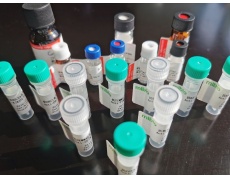中文名称: SEPTIN2 抗原(重组蛋白)
英文名称: SEPTIN2 Antigen (Recombinant Protein)
别 名: septin 2; DIFF6; NEDD5; SEPT2; NEDD-5; Pnutl3; hNedd5
储 存: 冷冻(-20℃)
相关类别:抗原
概 述
技术规格
|
Full name: |
septin 2 |
|
Synonyms: |
DIFF6; NEDD5; SEPT2; NEDD-5; Pnutl3; hNedd5 |
|
Swissprot: |
Q15019 |
|
Gene Accession: |
BC033559 |
|
Purity: |
>85%, as determined by Coomassie blue stained SDS-PAGE |
|
Expression system: |
Escherichia coli |
|
Tags: |
His tag C-Terminus, GST tag N-Terminus |
|
Background: |
Filament-forming cytoskeletal GTPase. Forms a filamentous structure with SEPTIN12, SEPTIN6, SEPTIN2 and probably SEPTIN4 at the sperm annulus which is required for the structural integrity and motility of the sperm tail during postmeiotic differentiation (PubMed:25588830). Required for normal organization of the actin cytoskeleton. Plays a role in the biogenesis of polarized columnar-shaped epithelium by maintaining polyglutamylated microtubules, thus facilitating efficient vesicle transport, and by impeding MAP4 binding to tubulin. Required for the progression through mitosis. Forms a scaffold at the midplane of the mitotic splindle required to maintain CENPE localization at kinetochores and consequently chromosome congression. During anaphase, may be required for chromosome segregation and spindle elongation. Plays a role in ciliogenesis and collective cell movements. In cilia, required for the integrity of the diffusion barrier at the base of the primary cilium that prevents diffusion of transmembrane proteins between the cilia and plasma membranes: probably acts by regulating the assembly of the tectonic-like complex (also named B9 complex) by localizing TMEM231 protein. May play a role in the internalization of 2 intracellular microbial pathogens, Listeria monocytogenes and Shigella flexneri. |
 购物车
购物车 帮助
帮助
 021-54845833/15800441009
021-54845833/15800441009
